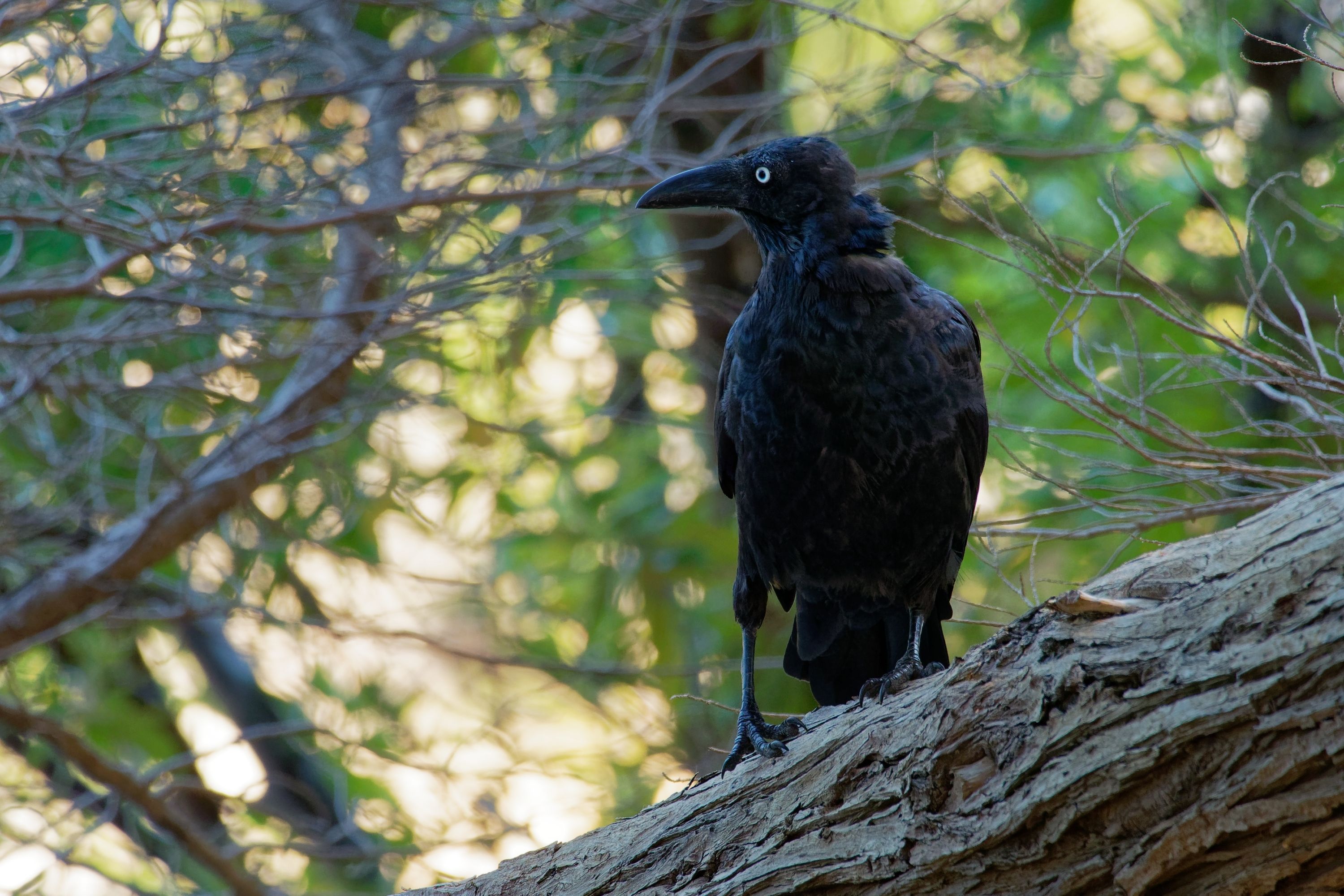Forest raven
(Corvus tasmanicus)

Description
The forest raven (Corvus tasmanicus), also commonly known as the Tasmanian raven, is a passerine bird in the family Corvidae native to Tasmania and parts of southern Victoria, such as Wilsons Promontory and Portland. Populations are also found in parts of New South Wales, including Dorrigo and Armidale. Measuring 50–53 cm (20–21 in) in length, it has all-black plumage, beak and legs. As with the other two species of raven in Australia, its black feathers have grey bases. Adults have white irises; younger birds have dark brown and then hazel irises with an inner blue rim. New South Wales populations are recognised as a separate subspecies C. tasmanicus boreus, but appear to be nested within the Tasmanian subspecies genetically. The forest raven lives in a wide variety of habitats in Tasmania but is restricted to more closed forest on mainland Australia. Breeding takes place in spring and summer, occurring later in Tasmania than in New South Wales. The nest is a bowl-shaped structure of sticks sited high in a tree. An omnivorous and opportunistic feeder, it eats a wide variety of plant and animal material, as well as food waste from urban areas and roadkill. It has been blamed for killing lambs and poultry and raiding orchards in Tasmania, and is unprotected under Tasmanian legislation. The forest raven is sedentary, with pairs generally bonding for life and establishing permanent territories. The largest of the Australian corvids, the adult forest raven is 50–53 cm (20–21 in) in length with a wingspan between 91–113 cm (36–44 in) and weight of approximately 650 g (1.43 lb). There is no seasonal variation in plumage, which is entirely glossy black with a blue or green sheen visible on the upperparts. The wings are long and broad, with the largest of its ten primary feathers (usually the seventh but occasionally the eighth) almost reaching the end of the tail when at rest. The tail is rounded or wedge-shaped. It is quite short in Tasmanian populations but longer in northern New South Wales. The beak is a similar shape to that of the little raven, though more massive and heavy-set. The upper mandible, including the nares and nasal groove, is covered with bristles. The mouth and tongue are black, as are the powerful legs and feet. The tibia is fully feathered and the tarsus is long. Sexes have identical plumage; the male is generally larger, but there is considerable overlap in size between individuals.
Taxonomic tree:







